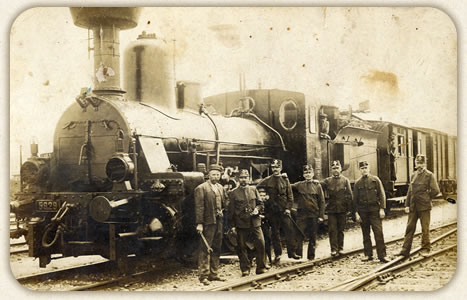|
|
|
|
|
|
|
|
|
|
 |
|
 |
|
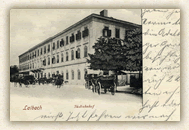 |
|
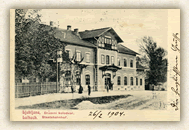 |
|
|
Zidani most, east of Ljubljana, was a railway junction where the lines from Vienna (view towards the north) and Belgrade (from right) joined. From both, trains with local and foreign emigrants were speeding towards Ljubljana (in the postcard to the left). |
|
The Lower Carniola railway station at the east entrance to Ljubljana was the last before the main railway station. Many Slovene emigrants coming from the east (Dolenjska-Lower Carniola), alighted from the train there and walked through the town to the station in the community Spodnja Šiška, which was not under town’s jurisdiction. There they boarded the train again towards the chosen departure port. Why at Spodnja Šiška? To avoid the municipal police control. |
|
Ljubljana main railway station with several hackney carriages that transported passengers to town. |
|
The state railway station in the community of Šiška. |
|
|
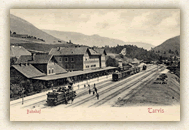 |
|
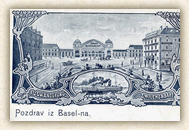 |
|
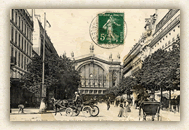 |
|
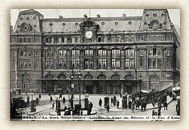 |
|
|
The railway station in Trbiž (Tarvis). |
|
An advertising picture postcard of the square in front of the railway station in Basel; on the right we see the main agency of the shipping company Compagnie Générale Transatlantique. On the building of the mentioned company is a sign in Slovene language: “Izseljevanje” (Emigration). |
|
La Gare du Nord in Paris was the station for the route towards the north. |
|
La Gare St. Lazare in Paris was the most important for Slovene emigrants travelling on the so-called “French line”, which lead from Ljubljana through the mentioned railway stations to Le Havre or to Cherbourg on the Atlantic shore. |
|
|
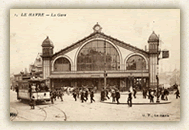 |
|
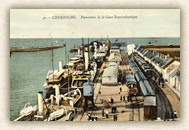 |
|
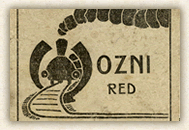 |
|
|
|
|
Railway station in Le Havre. |
|
The train conveyed the emigrants to the pier (La Gare Transatlantique) where they embarked the steamship after inspection (service de l’Emigration Enregistrement) |
|
Front page of the timetable (October 1st 1910) with arrivals and departures of trains to and from Ljubljana. Pay attention to the number of trains in directions towards Vienna, Trieste and Trbiž! |
|
|
|















